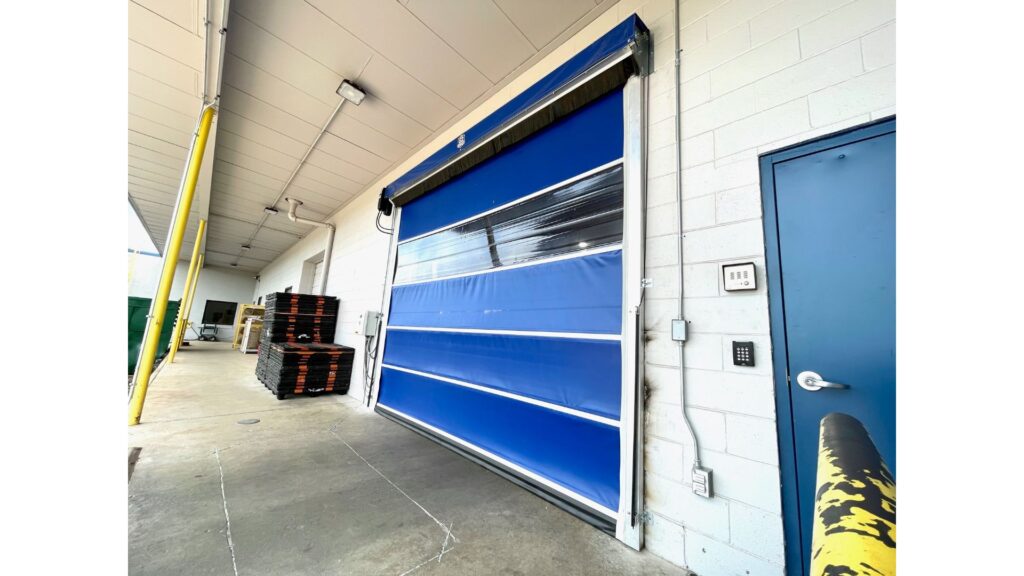Accessibility is a key part of ensuring your business storefront is available for anyone to access. ADA compliance for storefront doors isn’t just a legal requirement, it’s an imperative part of ensuring your business can be accessed by anyone!
The ADA’s (Americans with Disabilities Act) guidelines ensure that individuals with disabilities are able to access resources and services just like anyone else. They help businesses keep their facilities compliant.
In this post, we’ll be talking specifically about the ADA specifications for commercial storefront doors. Read to learn the basics of ADA compliance, how to check for compliance and maintain it, and how you can use a commercial door company to ensure compliance and update your storefront doors if needed!
ADA Compliance for Storefront Doors: The Basics
The ADA lays out specific guidelines for storefront doors to ensure they are accessible to everyone, including those with disabilities. Below is an overview of those guidelines:
- Minimum Width: Storefront doors are required to have a minimum clear opening width of 32 inches when the door is open at 90 degrees. This allows plenty of space for wheelchair access.
- Maximum Force Required for Opening: Per the industry standard, interior doors should not exceed 5 pounds of required force to open, and exterior doors (like storefronts) should not exceed 8.5 pounds of required force. This ensures that your doors can be pushed and pulled open easily by anyone.
- Threshold and Flooring: Beveled door thresholds should be no higher than ½ an inch, and the flooring around the door should be level to prevent tripping or obstructions. If the threshold is not beveled, it cannot exceed ¼ an in height.
- Handle Height and Type: Door handles must be 34-48 inches above the floor. Handles must allow plenty of clearance for a loose grip (at least 1 and ½ inches) and must not require the user to twist their wrist to operate.
- Visibility: Glass doors should have markings to make them visible to visually impaired individuals.
Keep in mind that this is just a brief overview of the guidelines, and guidelines vary between different types of entrances and doors. For more detailed information on these guidelines, visit the ADA website.
Checking for ADA Compliance and Upkeeping Accessibility
Maintenance is key to keeping up with your commercial doors in general, but you can also use it to ensure your doors stay accessible. Here are a few things you can do during regular maintenance to keep up with compliance.
Regular Inspections
Schedule routine checks every few months to ensure your doors meet ADA standards. Pay attention to things like changes in required opening force, threshold height, and the condition of your handles and visibility markings
Keep Paths Clear
Regularly ensure that the path of travel through and around your door is clear of any obstructions. Ensure it has a stable and slip-resistant surface. Be sure to keep enough space around your doors for the maneuverability of a wheelchair.
Adjust and Lubricate Door Closers
Closing speed for automatic doors and doors with closers is also an important factor to keep up with. Regularly lubricate moving parts on your doors that control closing speed, and make adjustments if needed.
Replace Worn Out Parts
Keep an eye out for wear and tear on things like handles and hinges. Replace them if they become damaged. You may need to call a commercial door company for help with larger repairs (see below).
Stay Informed
ADA regulations can be updated! Stay informed with changes in guidelines and regulations to ensure your doors are up-to-date with the law.
When to Call a Commercial Door Company
While you can help maintain your doors on your own, there are instances where it is best to enlist the help of commercial door professionals. You should call a professional door company in the following instances:
- Initial Compliance Check: If you’ve never had your existing doors checked for compliance, a professional assessment is a must.
- Renovations or New Installations: If you are renovating your building or have just had new doors installed, a commercial door company can help ensure that you meet ADA specifications.
- Complex Repairs: If your doors require extensive repairs or complex adjustments, professional expertise is a must.
- Regulation Updates: When ADA requirements change, a commercial door company can help you navigate these changes and make necessary updates.
ADA Compliance for Storefront Doors: Conclusion
ADA compliance for storefront doors isn’t just about following regulations; it’s about making your business welcoming and accessible to all customers! Regular checks, maintenance, and professional assistance are key to ensuring you stay in the loop with ADA standards. By prioritizing accessibility, you can ensure all customers are able to access and enjoy your business and services.
If you need help with any of the tips listed above, reach out to us at Commercial Door. We specialize in all types of commercial doors and storefronts in the Norman, Moore, Oklahoma City, and Tulsa areas. Let us know on our contact page if you have any questions or if you need any ADA compliance assistance. We’re happy to help!
Learn more about storefronts and other commercial doors on our blog and check out our full range of services. View our locations to find a Commercial Door near you.





